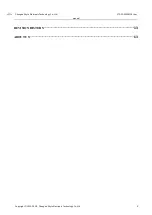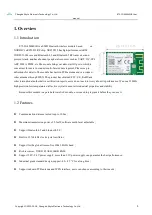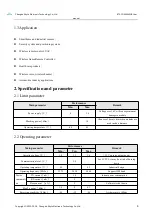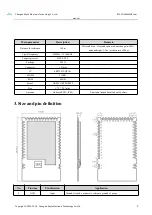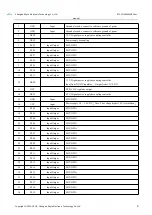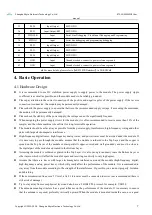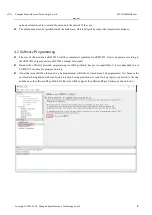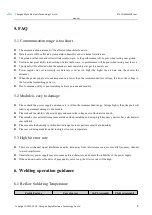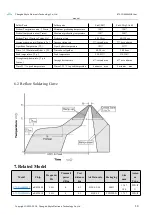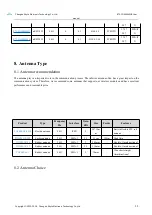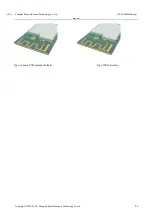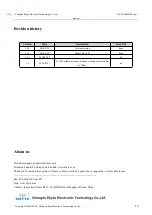
Chengdu Ebyte Electronic Technology Co., Ltd.
E73-2G4M04S1B User
manual
Copyright ©2012–2018,Chengdu Ebyte Electronic Technology Co.,Ltd.
7
35
P0.20
Input/Output
MCU GPIO
36
P0.21
Input/Output/RST
MCU GPIO
37
SWDCLK
Input
Serial Line Debugging / Clock Input Debugging and Programming
38
SWDIO
Input
Serial line debugging and programming debugging
39
P0.22
Input/Output
MCU GPIO
40
P0.23
Input/Output
MCU GPIO
41
P0.24
Input/Output
MCU GPIO
42
GND
Input
Ground electrode, connect to power reference ground
43
GND
Input
Ground electrode, connect to power reference ground
★
For more details, please refer to
《
nRF528XXDatasheet
》
in NORDIC
★
4. Basic Operation
4.1 Hardware Design
It is recommended to use DC stabilized power supply to supply power to the module. The power supply ripple
coefficient is as small as possible, and the module needs to be reliably grounded.
Please pay attention to the correct connection of the positive and negative poles of the power supply. If the reverse
connection is connected, the module may be permanently damaged.
Please check the power supply to ensure that between the recommended supply voltage, if exceeding the maximum,
the module will be permanently damaged.
Please check the stability of the power supply, the voltage can not be significantly frequent.
When designing the power supply circuit for the module, it is often recommended to reserve more than 30% of the
margin, and the whole machine is beneficial for long-term stable operation.
The module should be as far away as possible from the power supply, transformers, high-frequency wiring and other
parts with large electromagnetic interference.
High-frequency digital traces, high-frequency analog traces, and power traces must be avoided under the module. If
it is necessary to pass through the module, assume that the module is soldered to the Top Layer, and the copper is
spread on the Top Layer of the module contact part(All copper-covered and well grounded), and must be close to
the digital part of the module and routed in the Bottom Layer.
Assuming the module is soldered or placed in the Top Layer, it is also wrong to randomly route the Bottom Layer or
other layers, which will affect the module's spurs and receiving sensitivity to varying degrees.
Assume that there are traces with large electromagnetic interference around the module (high-frequency digital,
high-frequency analog, power trace), which will greatly affect the performance of the module. It is recommended to
stay away from the module according to the strength of the interference. If possible, you can do it properly. Isolation
and shielding
If the communication line uses a 5V level, a 1k-5.1k resistor must be connected in series (not recommended, there is
still a risk of damage).
Try to stay away from some physical layers and also have a 2.4GHz TTL protocol, for example: USB3.0
The antenna mounting structure has a great influence on the performance of the module. It is necessary to ensure
that the antenna is exposed, preferably vertically upward. When the module is mounted inside the case, use a good



